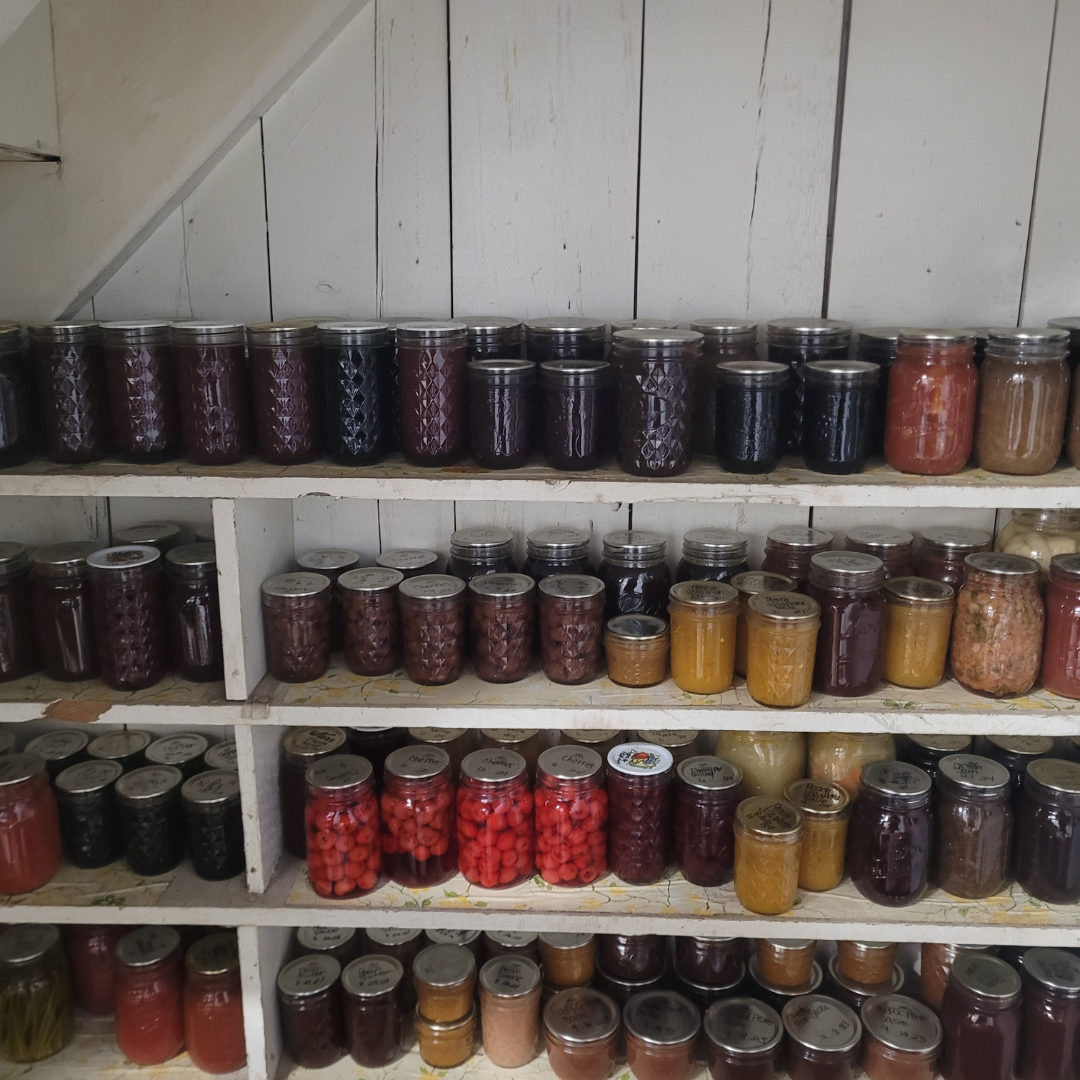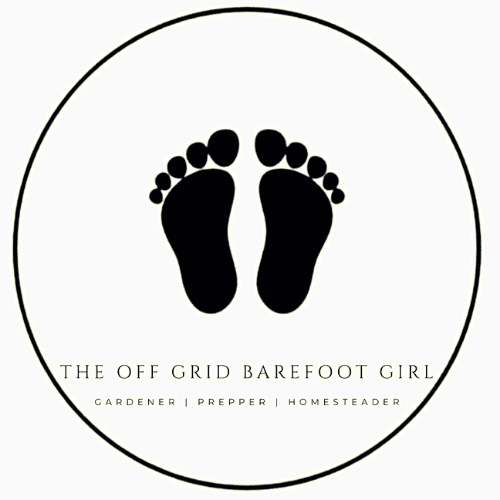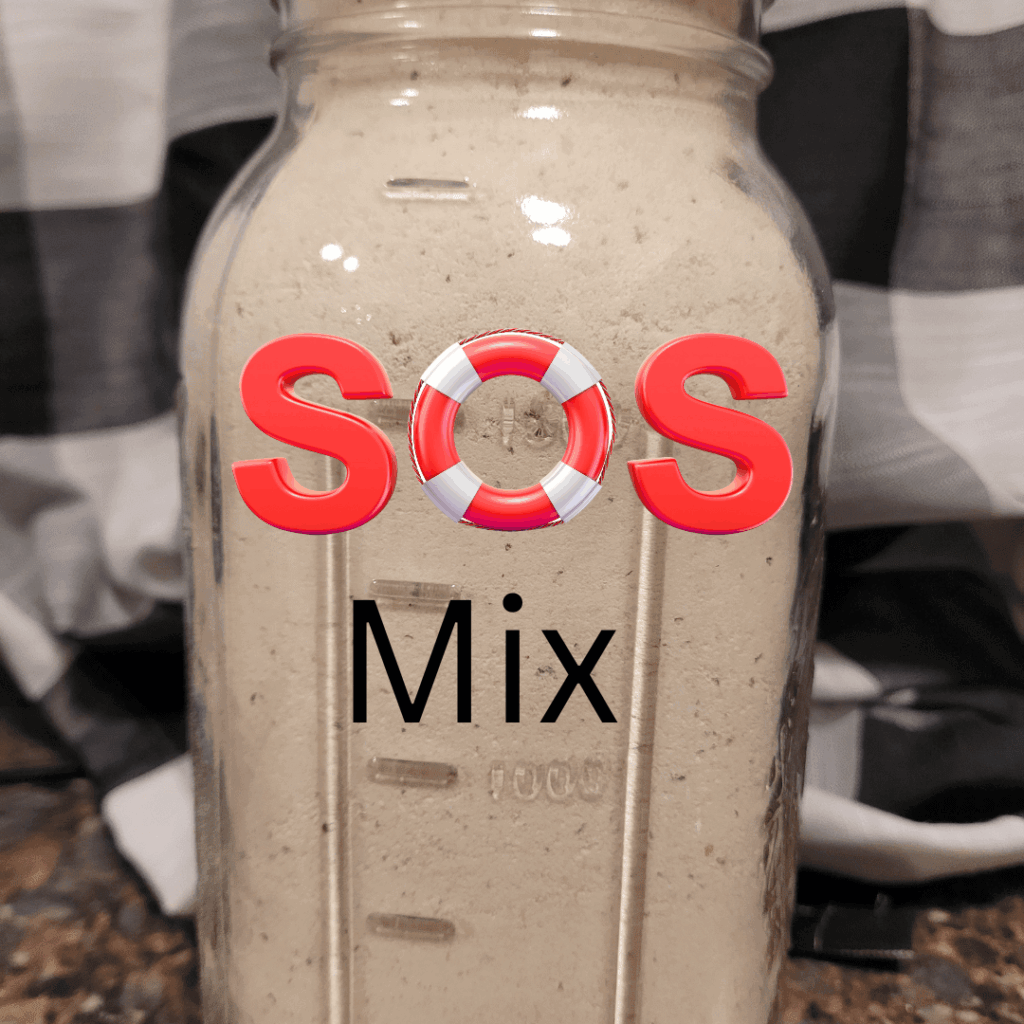Prepare your home for winter with the best pantry staples to stockpile now! From long-lasting grains and beans to hearty canned goods and warming spices, having a well-stocked pantry ensures you’re ready for cold days, unexpected power outages, or busy holiday cooking. Discover essential winter foods that are versatile, nutritious, and perfect for creating cozy, comforting meals all season long.
As the crisp winter air settles in, have you ever found yourself staring at a nearly empty pantry, wishing you’d stocked up earlier? You’re not alone! Winter can be unpredictable, and having a well-stocked pantry is like having a cozy security blanket for those chilly days when venturing out feels like a polar expedition.
I remember one particularly harsh winter when a surprise snowstorm left us homebound for days. That’s when I realized the true value of a well-prepared pantry. It’s not just about surviving; it’s about thriving and enjoying delicious, comforting meals even when Mother Nature decides to throw a snowball. Whether you’re a seasoned prepper or just looking to be a bit more prepared this winter, having the right staples on hand can make all the difference.
In this post, I’ll explore the best winter pantry staples to stockpile now so you can be more comfortable. From hearty grains and versatile canned goods to baking essentials and long-lasting produce, I’ll cover everything you need to create warm, nourishing meals all season long. So, grab a cup of hot cocoa, and let’s discuss the importance of winter pantry prep – because a little planning today means peace of mind (and delicious meals) tomorrow (or all winter long!)
This is a pinnable post. Tap or hover over any image in this post to pin to your Pinterest Boards.
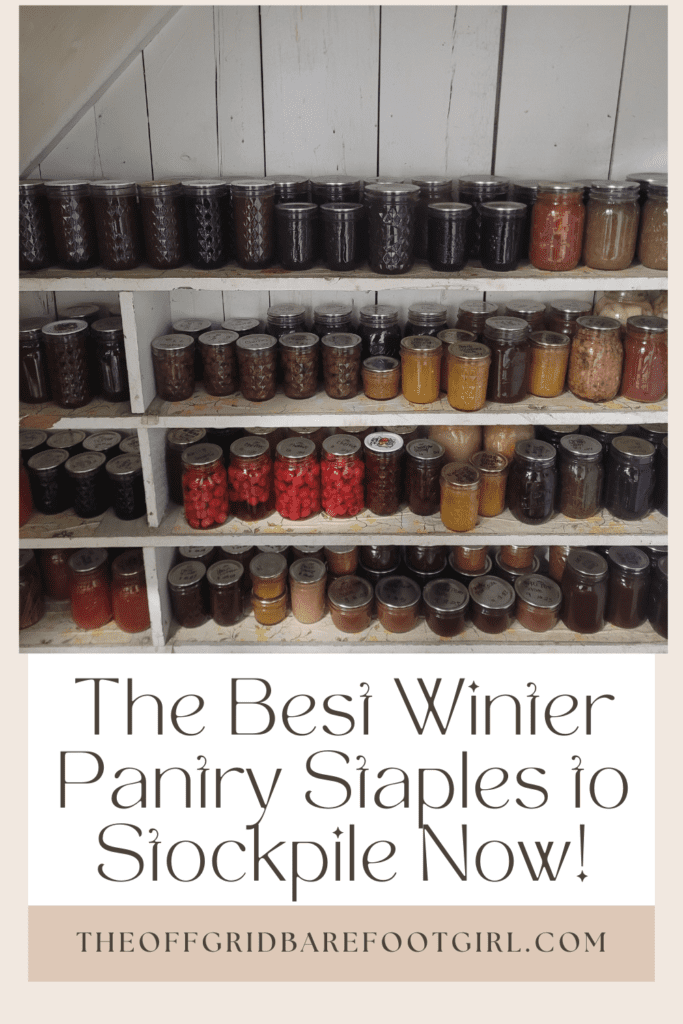
Grains and Legumes
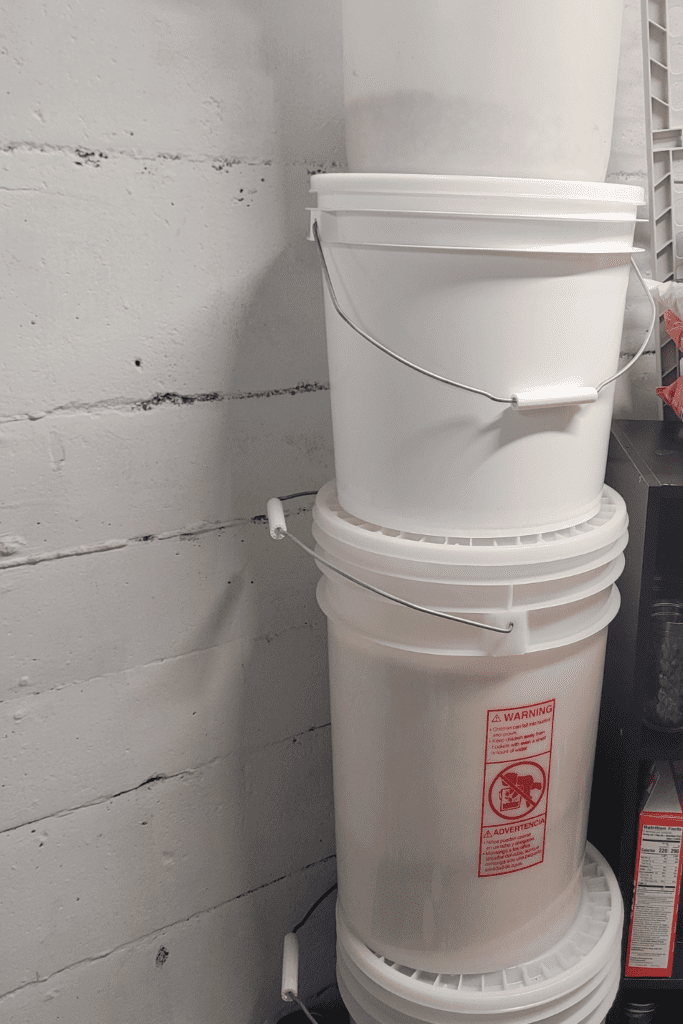
When it comes to building a robust winter pantry, grains and legumes are absolute essentials. These versatile staples not only provide a hearty base for countless meals, but also offer long-term storage potential, making them perfect for those of us who like to be prepared for anything.
Rice
Let’s start with rice, a true pantry powerhouse. Whether you prefer white, brown, or wild varieties, rice is incredibly versatile and can be used in everything from stir-fries to risotto. It’s also one of the most shelf-stable foods you can stock, lasting up to 30 years when stored properly in airtight containers. Also, can you imagine having warm rice pudding on a freezing snowed-in day?
Pasta
Pasta is another must-have for your winter stockpile. From quick weeknight dinners to comforting casseroles, pasta’s possibilities are endless. Plus, it’s easy to store and has a long shelf life, especially when kept in a cool, dry place. Don’t forget to include a variety of shapes to keep your meals interesting!
Quinoa
For those looking to add some nutritional punch to their pantry, quinoa is an excellent choice. This protein-packed grain is not only delicious, but also incredibly versatile. Use it as a base for salads, add it to soups, or even bake it into bread for an extra boost of nutrients.
Legumes
Now, let’s talk legumes. Lentils are a personal favorite of mine, and for good reason. They’re quick-cooking, packed with protein and fiber, and can be used in everything from soups to veggie burgers. Plus, they come in various colors and sizes, each with its own unique flavor profile.
Oats
Oats are a versatile and essential staple for your winter pantry. They provide a hearty, nutritious base for many meals, perfect for cold mornings when you need a warm, filling breakfast. Rich in fiber, vitamins, and minerals, oats support a healthy digestive system and keep you full longer. They can be used in a variety of dishes, from classic oatmeal and granola to baking goods like cookies, muffins, and bread. Their long shelf life makes them a great storage option, ensuring you have a reliable source of nourishment throughout the winter season.
Beans
Last but certainly not least, we have beans. From black beans to chickpeas, these humble legumes are true pantry heroes. They’re incredibly nutritious, budget-friendly, and can be used in a wide range of dishes. Dried beans have an exceptionally long shelf life, but canned varieties are great for convenience and quick meal prep.
When stocking up on these grains and legumes, remember to store them properly to maximize their shelf life. Airtight containers are your best friend here and don’t forget to label everything with the purchase date. It’s also a good idea to rotate your stock, using older items first to ensure freshness.
By building a diverse collection of grains and legumes in your winter pantry, you’ll be well-prepared to create nourishing, satisfying meals all season long. Plus, you’ll have the peace of mind that comes with knowing you’re ready for whatever winter might bring. So go ahead, stock up, and get creative in the kitchen – your future self and hungry family will thank you!
Canned Goods
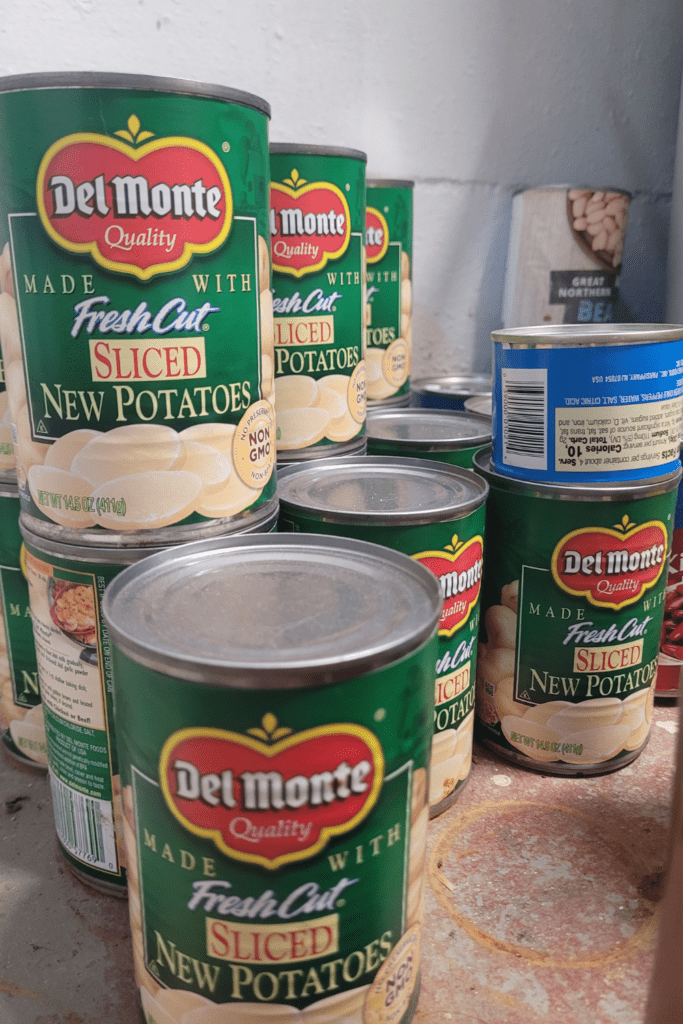
When it comes to stocking up your winter pantry, canned goods are an absolute must-have. They’re versatile, long-lasting, and can be a real lifesaver when fresh produce is scarce. Let’s discuss the essential canned items you should consider adding to your stockpile.
Vegetables
Canned vegetables are a fantastic way to ensure you’re getting your greens even when the garden is dormant. Stock up on a variety of options like green beans, corn, peas, and carrots. These can be easily added to soups, stews, or casseroles, providing essential nutrients and fiber. Don’t forget about less common options like canned pumpkin, which can be used in both sweet and savory dishes.
Fruits
While fresh fruits might be hard to come by in winter, canned fruits can satisfy your sweet tooth and provide important vitamins. Peaches, pears, and fruit cocktails are popular choices. They’re great for quick snacks, desserts, or even as toppings for your morning oatmeal. Remember, opt for fruits canned in water or their own juices rather than syrup for a healthier option.
Soups
There’s nothing quite like a warm bowl of soup on a cold winter’s day. Canned soups are not only comforting, but also convenient. Stock up on a variety of flavors – from classic chicken noodles to hearty vegetable soups. These can serve as quick meals on busy days or as bases for more elaborate dishes.
Fish
Canned fish is an excellent source of protein and omega-3 fatty acids. Tuna, salmon, and sardines are all great options. They can be used in sandwiches, salads, or pasta dishes. Plus, they’re incredibly versatile – you can even make fish cakes or patties with them for a more substantial meal.
Tomato Products
Last but certainly not least, don’t forget to stock up on canned tomato products. These are incredibly versatile and form the base of many winter comfort foods. Whole peeled tomatoes, diced tomatoes, tomato paste, and tomato sauce should all have a place in your pantry. They’re perfect for making homemade soups, sauces, and stews.
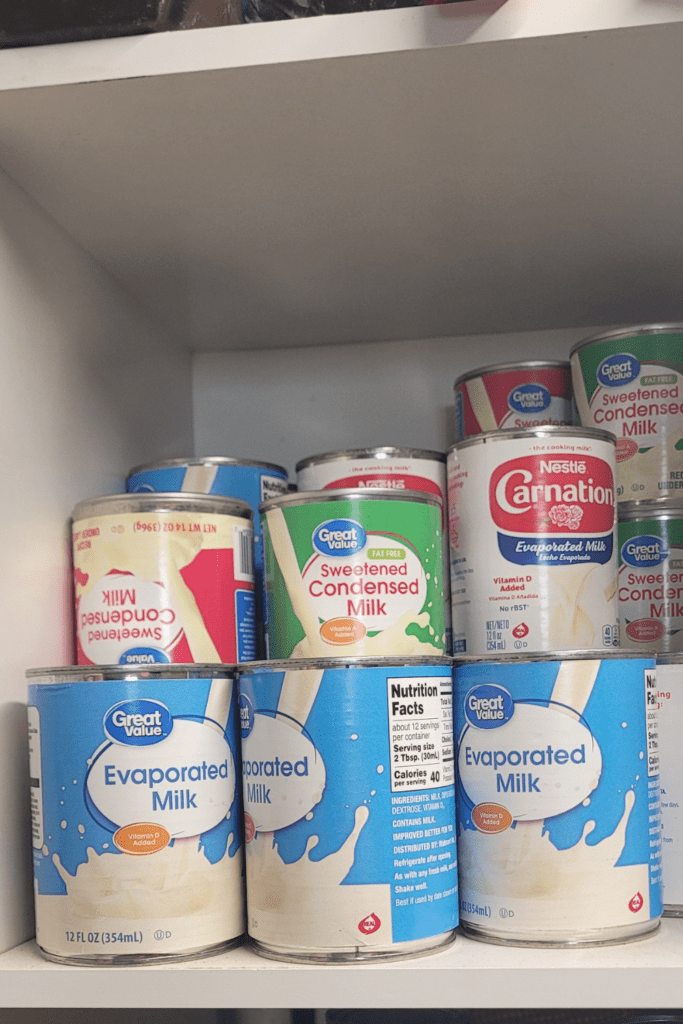
When building your canned goods stockpile, remember to rotate your stock regularly. Use the “first in, first out” method to ensure nothing goes to waste. Also, pay attention to expiration dates when purchasing. While most canned goods have a long shelf life, it’s best to use them within a year or two for optimal quality.
By having a well-stocked pantry of canned goods, you’ll be prepared for whatever winter throws your way. Whether it’s a sudden snowstorm that keeps you homebound or simply a busy day when you need a quick meal, your canned goods will be there to save the day. Plus, with a little creativity, you can transform these humble pantry staples into delicious, comforting meals that’ll warm you from the inside out.
Baking Essentials
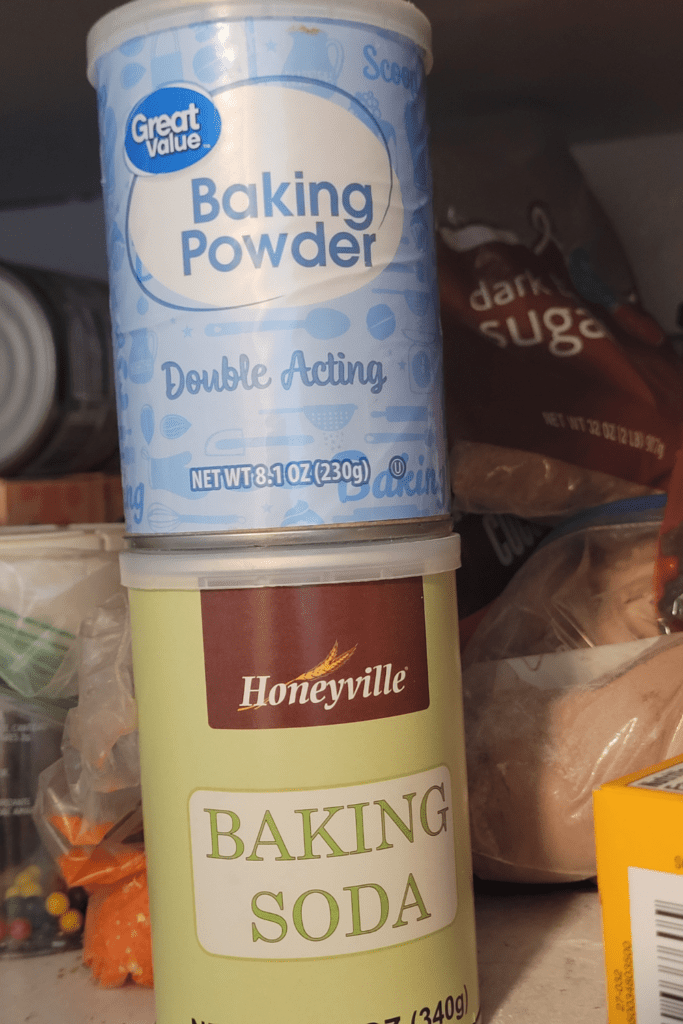
When it comes to winter preparedness, having a well-stocked pantry is essential. As someone who’s spent years honing my self-sufficiency skills, I can’t stress enough the importance of keeping baking essentials on hand. These staples not only allow you to whip up comforting treats during cold months, but also provide the foundation for many hearty meals.
Flour
Let’s start with flour, the backbone of baking. All-purpose flour is versatile, but consider stocking whole wheat and specialty flours like almond or coconut for variety. Store them in airtight containers to prevent moisture and pests. I’ve found that properly stored flour can last up to a year, making it perfect for long-term stockpiling.
Sugar
Sugar is another must-have. White granulated sugar is a given, but don’t forget about brown sugar and powdered sugar. These add depth to your baked goods and can be used in savory dishes too. Keep them in sealed containers to prevent clumping.
Baking Powder and Baking Soda
Baking powder and baking soda are leavening agents that give your baked goods that perfect rise. While they have long shelf lives, it’s good practice to check their effectiveness before use. A simple test: mix a teaspoon with water – if it bubbles vigorously, it’s still good to go.
Yeast
Yeast is crucial for bread making, a skill that’s become increasingly popular for home cooks. Active dry yeast and instant yeast are both great options. Store them in the freezer to extend their shelf life significantly. There’s nothing quite like the smell of freshly baked bread wafting through your home on a chilly winter day.
Cocoa Powder
Lastly, cocoa powder is a versatile ingredient that can transform ordinary recipes into decadent chocolate treats. It’s not just for desserts – a dash can add depth to chili or stews. Opt for unsweetened cocoa powder for maximum versatility.
Powdered Milk
Powdered milk is a practical and reliable addition to your winter pantry. With a long shelf life and no need for refrigeration, it provides an essential source of protein, calcium, and vitamins when fresh milk is not available. Powdered milk can be reconstituted with water for use in baking, cooking, or as a drink, making it an excellent substitute in recipes that call for liquid milk. It’s also perfect for making hot drinks like cocoa or tea, ensuring you can still enjoy creamy, comforting beverages during the colder months. Its versatility and convenience make powdered milk a must-have staple for winter preparedness.
Remember, these baking essentials aren’t just for sweet treats. They form the basis of many staple foods that can sustain you through winter. Flour and yeast for bread, baking powder for biscuits and dumplings, sugar for preserving fruits – the possibilities are endless.
By stocking up on these baking essentials, you’re not just preparing for winter; you’re setting yourself up for a season of warmth, comfort, and delicious homemade goodness. Whether you’re an experienced baker or just starting out, having these items on hand will ensure you’re ready to create nourishing meals and treats all winter long.
Cooking Oils and Condiments
When it comes to stocking up your winter pantry, don’t forget the essential cooking oils and condiments. These versatile ingredients can transform simple meals into delicious feasts, even when fresh produce is scarce.
Olive Oil
A staple in any well-stocked pantry, olive oil is not only delicious, but also packed with health benefits. Its versatility makes it perfect for cooking, dressing salads, or drizzling over freshly baked bread. When stored properly in a cool, dark place, olive oil can last up to two years, making it an excellent choice for long-term storage.
Vegetable Oil
While olive oil is a favorite for many, vegetable oil has its place in the pantry too. Its neutral flavor makes it ideal for baking and high-heat cooking. Plus, it’s often more budget-friendly, allowing you to stock up without breaking the bank. Just remember to keep it sealed tightly to prevent rancidity.
Vinegar
Vinegar is a true pantry powerhouse. From apple cider to balsamic, different types of vinegar can add depth and tanginess to your dishes. It’s also a natural preservative, which comes in handy when pickling vegetables from your garden. I always keep a few varieties on hand for different recipes and flavor profiles.
Soy Sauce
This fermented soybean sauce is a flavor bomb that can elevate simple rice and vegetable dishes. Its umami-rich taste adds depth to stir-fries, marinades, and even homemade salad dressings. Opt for low-sodium versions if you’re watching your salt intake. Properly stored, soy sauce can last for years, making it a reliable pantry staple.
Hot Sauce
When the winter chill sets in, a dash of hot sauce can warm you up from the inside out. Whether you prefer a mild kick or tongue-numbing heat, having a variety of hot sauces on hand can spice up any meal. From classic Tabasco to homemade fermented sauces, the options are endless. Plus, the vinegar content in most hot sauces gives them a long shelf life.
These cooking oils and condiments are more than just flavor enhancers; they’re the building blocks of countless meals. By stocking up on these essentials, you’ll be prepared to create delicious and varied dishes throughout the winter months, even when fresh ingredients are limited.
Remember, proper storage is key to maintaining the quality and longevity of these items. Keep oils and vinegar in a cool, dark place, and always make sure containers are tightly sealed. With these pantry staples at your fingertips, you’ll be ready to whip up comforting meals all winter long, no matter what Mother Nature throws your way.
Dried Herbs and Spices
When it comes to stocking up your winter pantry, dried herbs and spices are absolute essentials. Not only do they add flavor and depth to your meals, but they also have a long shelf life, making them perfect for those of us who like to be prepared for anything.
Salt and Pepper
Let’s start with the basics: salt and pepper. These two staples are the foundation of seasoning in any kitchen. Salt not only enhances flavors, but is also crucial for preserving food. Black pepper adds a subtle heat and complexity to dishes. I always keep a good supply of both on hand, especially during the winter months when fresh ingredients might be scarce.
Garlic and Onion Powder
Garlic powder and onion powder are next on my list. These versatile seasonings can add a punch of flavor to soups, stews, and casseroles – the kind of hearty meals we crave during cold winter days. They’re also great for whipping up quick rubs for meats or sprinkling over roasted vegetables. Having these powders on hand means you can enjoy garlic and onion flavors even when you’ve run out of the fresh stuff.
Italian Seasoning
Italian seasoning is a blend that typically includes basil, oregano, rosemary, and thyme. It’s a one-stop shop for adding Mediterranean flair to your winter dishes. I love using it in homemade tomato sauces, sprinkled over focaccia bread, or mixed into olive oil for a quick and delicious dipping sauce. Having a jar of Italian seasoning in your pantry means you’re always ready to transform simple ingredients into something special.
Cinnamon
Last but not least, don’t forget about cinnamon. This warm, sweet spice is perfect for adding depth to both sweet and savory dishes. Sprinkle it over oatmeal, add it to your coffee, or use it to spice up a hearty winter stew. Cinnamon also has the added benefit of making your home smell amazing – a little comfort during those long winter nights.
When storing your dried herbs and spices, keep them in airtight containers away from direct sunlight and heat. This will help preserve their flavor and potency. I like to label my jars with the date of purchase, so I know when it’s time to replace them. While dried herbs and spices don’t spoil in the traditional sense, they do lose their flavor over time.
Remember, a well-stocked spice cabinet can be your secret weapon for creating delicious, comforting meals all winter long. With these basics on hand, you’ll be ready to tackle any recipe or create your own culinary masterpieces, no matter what the weather brings. So go ahead, stock up now, and enjoy the flavors of the season!
Long-Lasting Produce
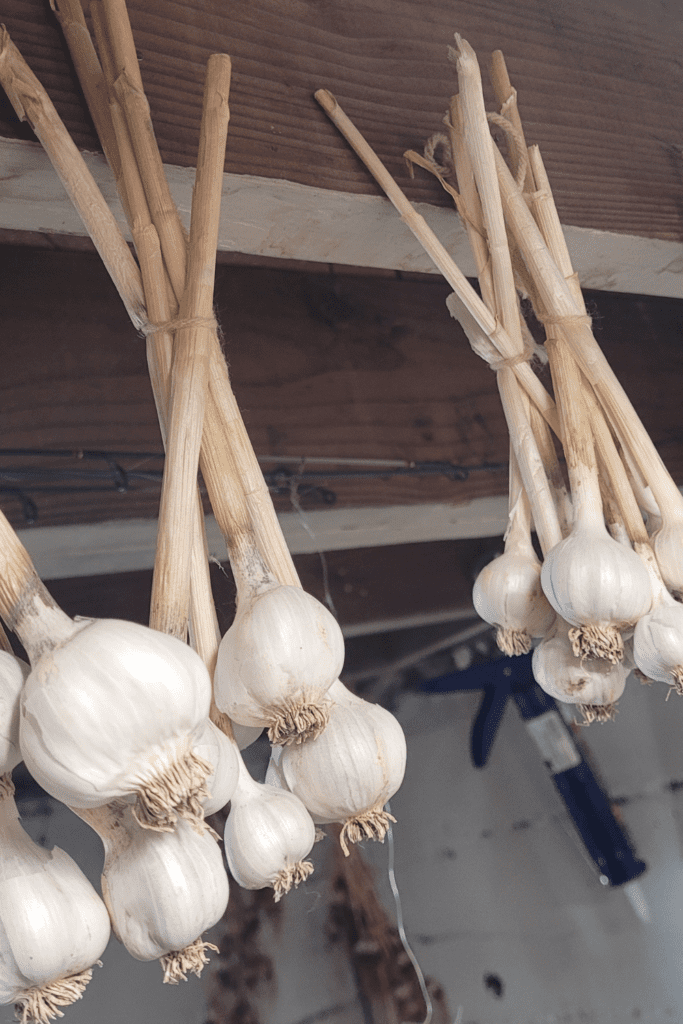
When it comes to stocking up for winter, long-lasting produce is a must-have in any well-prepared pantry. These fruits and vegetables not only provide essential nutrients, but also offer versatility in cooking and can last for weeks or even months when stored properly. Let’s explore some of the best options to keep your winter meals flavorful and nutritious.
Onions
Onions are a kitchen staple that can add depth and flavor to countless dishes. They’re incredibly versatile and can be stored for up to three months in a cool, dry place. To maximize their shelf life, keep them in a mesh bag or basket to allow air circulation. Avoid storing them near potatoes, as the gases they emit can cause each other to spoil more quickly.
Garlic
Like onions, garlic is a flavor powerhouse that can last for months when stored correctly. Keep whole bulbs in a cool, dry place with good air circulation. Avoid refrigerating garlic, as this can cause it to sprout. A well-stored bulb can last up to six months, ensuring you always have this aromatic ingredient on hand for your winter recipes.
Potatoes
Potatoes are a filling and nutritious staple that can last for several months when stored properly. Keep them in a cool, dark place (around 45-50°F is ideal) with good ventilation. Avoid plastic bags, as they can trap moisture and lead to spoilage. Instead, use paper bags or cardboard boxes. Remember to check your potatoes regularly and remove any that show signs of sprouting or softening.
Winter Squash
Winter squash varieties like butternut, acorn, and spaghetti squash are excellent choices for long-term storage. Their hard exteriors help protect the flesh inside, allowing them to last for several months. Store winter squash in a cool, dry place with good air circulation. Avoid stacking them, as this can cause bruising and lead to faster spoilage.
Apples
Apples are a delicious and nutritious fruit that can last for months when stored properly. Choose late-season varieties like Fuji, Granny Smith, or Pink Lady for the best storage life. Keep them in a cool place, ideally between 30-32°F with high humidity. A spare refrigerator or root cellar is perfect for this. Remember to store apples away from other produce, as they emit ethylene gas that can cause nearby fruits and vegetables to ripen and spoil more quickly.
By stocking up on these long-lasting produce items, you’ll ensure that you have a variety of nutritious ingredients on hand throughout the winter months. Not only will this help you maintain a healthy diet, but it’ll also reduce the need for frequent trips to the grocery store during harsh weather. With proper storage techniques, you can enjoy fresh flavors and vital nutrients all winter long, even when the garden is dormant. Remember, a well-stocked pantry is the foundation of self-sufficiency and preparedness, allowing you to create delicious, wholesome meals no matter what the season brings.
Winter Pantry Staples Checklist Printable
Conclusion
As we’ve explored, stocking up on winter pantry staples is a smart way to ensure you’re prepared for the colder months. From versatile grains and legumes to long-lasting canned goods, baking essentials, and flavorful herbs and spices, these items form the foundation of a well-stocked winter pantry. Don’t forget to include cooking oils, condiments, and hardy produce to round out your supplies.
By taking the time to stockpile these essentials now, you’ll be ready to whip up hearty, comforting meals all winter long, no matter what Mother Nature throws your way. Plus, you’ll save money and reduce trips to the store during potentially harsh weather.
Why not start your winter prep today? Take inventory of your current pantry and make a list of items you need to add. Remember, building a robust winter pantry is an ongoing process, and every little bit helps. Before you know it, you’ll have a cozy, well-stocked kitchen that’s ready to warm both body and soul through the winter months ahead.
Resources: Here are some helpful resources for further information.
- Pantry Staples List for Cooking From Scratch – By Chasing Our Simple
- The Top Pantry Essentials (With FREE Printable) – By Wholefully
- Printable Pantry Staples Checklist – By Carrie Elle
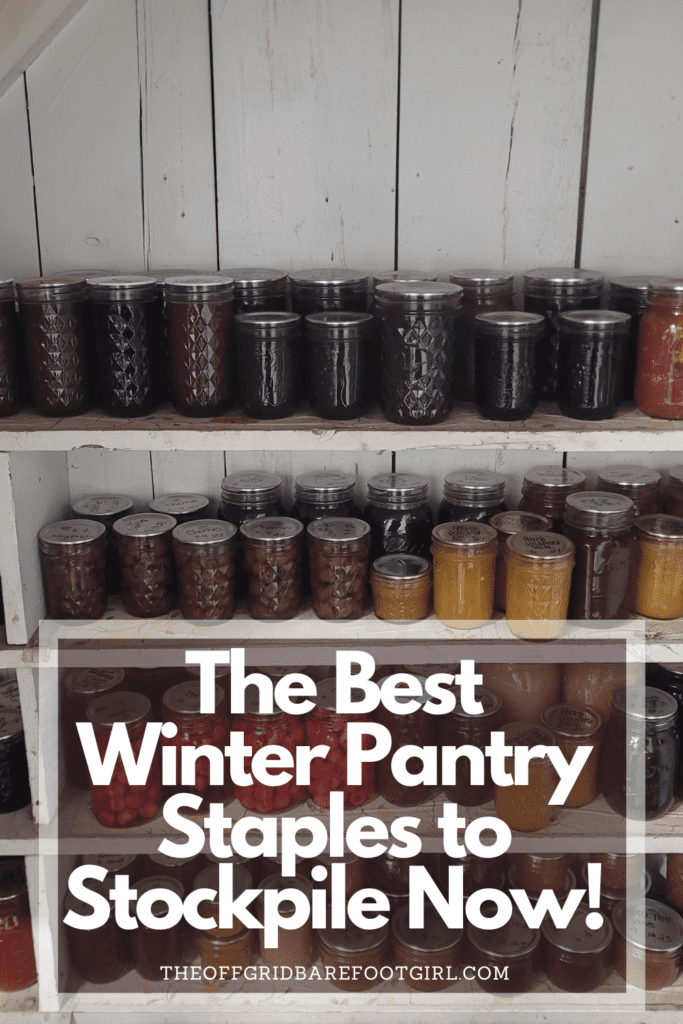
Frequently Asked Questions
1. What are the most important items to stockpile for winter?
Stock up on hearty grains like oats and rice, canned goods such as beans and vegetables, and long-lasting produce like potatoes and onions. Don’t forget essentials like cooking oils, baking supplies, and dried herbs.
2. How long can winter pantry staples last?
Many staples like grains, legumes, and canned goods can last for 1-2 years if stored properly in a cool, dry place. Long-lasting produce like potatoes and squash can last several months when stored in a cool, dark area.
3. What are the best canned goods to have for winter?
Focus on versatile canned goods like tomatoes, beans, tuna, and vegetables. These can be used in a wide variety of recipes and provide essential nutrients during winter months.
4. How can I ensure my pantry staples stay fresh during winter?
Store grains and legumes in airtight containers to prevent moisture and pests. Keep produce like potatoes and onions in a cool, ventilated space, and regularly check your stock to rotate older items to the front.
Summary
I hope I have inspired you to stockpile your pantry for your survival needs.
If you were encouraged by this post, I invite you to check out my FREE Printables Page for fun free printables, planners, and charts.
ENTER MY FREE Printables Page HERE
Here are some more of my canning inspiration posts to check out!
Grapes: How to Make and Can Grape Jam
Apple Cider: How to Make Homemade Apple Cider Vinegar
How to Make and Can Cherry Plum Jam
How to Make and Can Apple Butter In Crockpot
Stockpiling Condiments for Survival: Learn How I Do It!
How to Make and Can Vegetable Pot Pie Filling
Easy Canning Applesauce Recipes to Stalk Your Pantry!
How to Make Peach Jalapeno Jam
Cherries: How to Make Cherry Pie Filling
Cherries: How to Make Cherry Syrup
Salsa: How to Make and Can Cherry Salsa
Peaches: How to Make and Can Peach Salsa
Canning Supplies You Need Now for a Successful Canning Season!
How to Make and Can Balsamic Onion Jam
Cranberry Sauce: How to Make and Can Old Fashioned Cranberry Sauce
How to Make and Can Cranberry Merry Jam
How to Make and Can Strawberry Shortcake Jam
Cherry Jam: How to Make and Can Cherry Pie Jam
Carrot Cake Jam: How to Make and Can Carrot Cake Jam
Quince Jam: How to Can a Year’s Supply of Quince Jam
Root Beer Float Jelly: How to Make and Can Root Beer Float Jelly
Blessings,
The Off Grid Barefoot Girl

